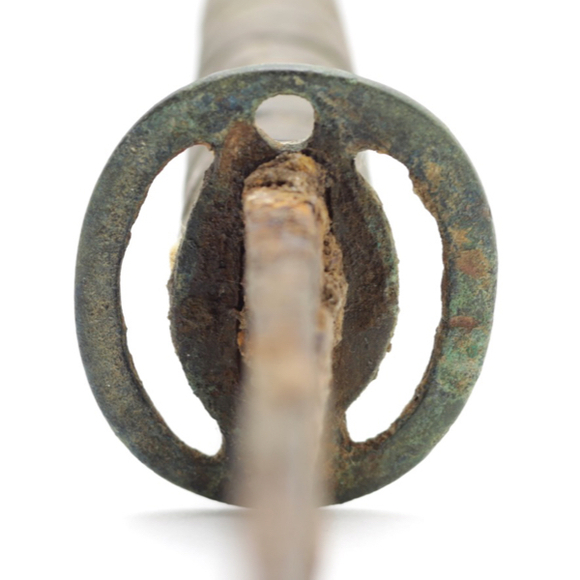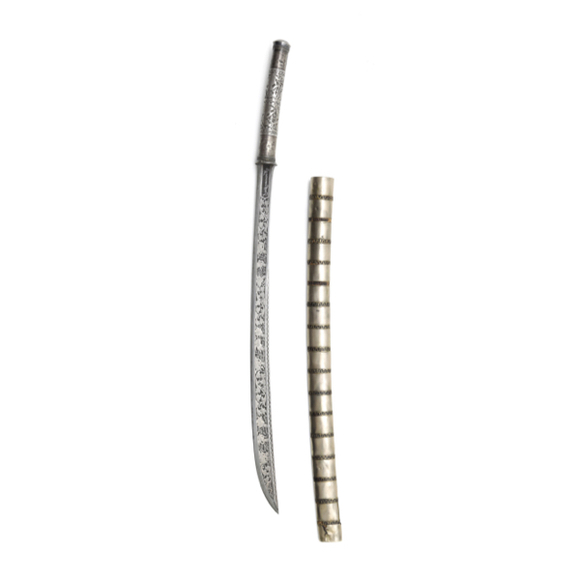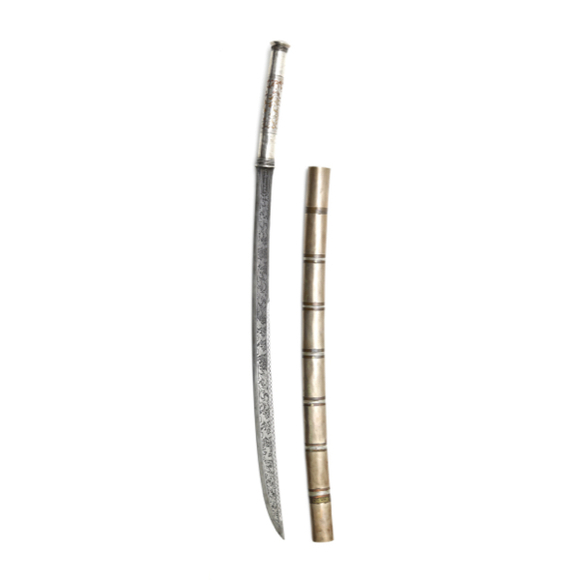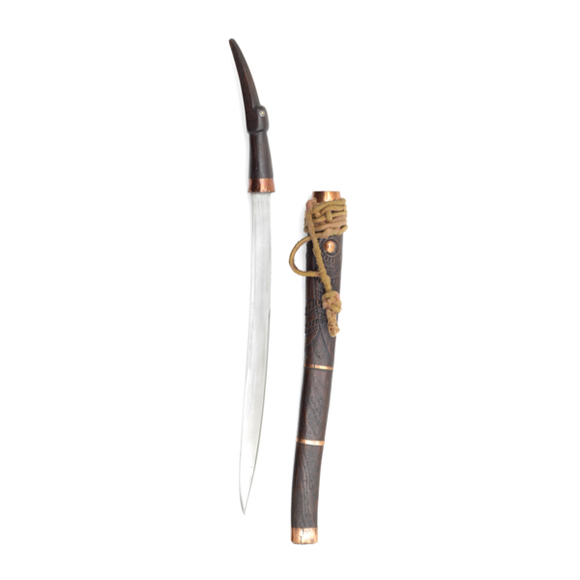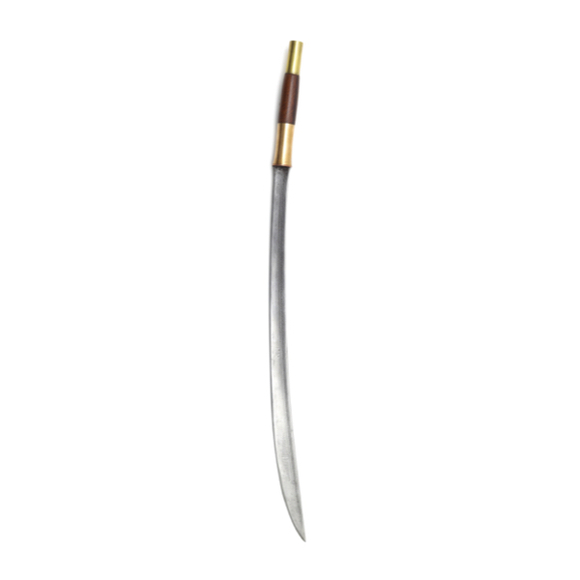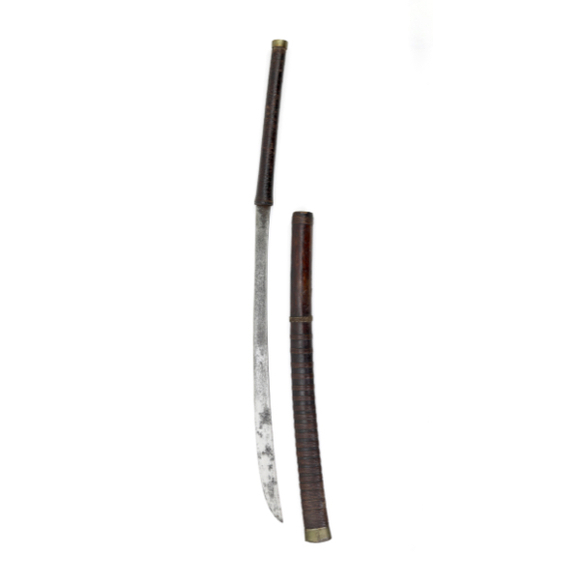In excavated condition, with copper alloy hilt.

Sheathed 87.7 cm
Sword 84.8 cm
60 cm
Base 9 mm
Middle 5 mm
5 cm from tip 4 mm
Narrowest at base 26.5 cm
Widest towards tip 34.5 cm
898 grams
8.2 cm from hilt
Iron, steel, wood, silver, white metal, brass, resin, lacquer
Mindan, Yamethin district
Burma
Late 19th century
Introduction
Silver overlaid dha made in Mindan village, south of Mandalay, gained fame in the 19th century.
"Another artistic development has its home in Mindan Village, Yamethin District, where every household depends more or less on its smithy, though there are only a few professors of the particular art to be described, which consists of an inlay of silver wire upon an iron surface. The usual articles produced are ornamental dalwes or da-hmyaungs, scissors, ..."
-E.N. Bell
A Monograph on Iron and Steel Work in Burma
Rangoon, Superintendent, Government Printing Burma, 1907
Description
The blade is always the star of the show on these, and this one is no exception. It has the typical Bamar geometry with a thick spine and long back bevel. Each side has a slightly hollow ground panel with crosshatching to which the fine silver overlay is attached.
The hilt is entirely covered with silver; its center is decorated with six figures in silver niello work, some of them holding swords. It has a lotus bud shaped pommel, looking at the workmanship, this is a working-life replacement that is of lesser workmanship than the rest of the piece. It also sustained some damage, see photos.

The scabbard is made of wood, entirely covered with ten segments of a white metal alloy, probably a very low grade silver. Between the segments are wavy lines of brass wire in lacquer. Scabbards of Mindan dha are rarely good to look at, and it seems they only produced the swords i the village, and the scabbards were obtained elsewhere.
One theory of these silver clad scabards is that they served as an off-hand protection when using the dha.
Story on blade
The story on this blade is the Sri Lankan epos Sinhabahu, which literally means "lion arm". It is from the Mahāvaṃsa or "Great Chronicle" of the 5th century.
He was a legendary king of Sri Lanka. According to legend, his father was a lion and his mother a princess of Vanga, an ancient kingdom in the Ganges Delta, present-day Bangladesh and West Bengal. Sinhabahu's hands and feet were said to have been like lion's paws.
Sinhabahu escaped his father with his mother and sister, killed his father, made his sister a consort and founded the city of Sinhapura, in the country of Lála. Sinhapura is believed to have been the origin of the Sinhalese people, but its exact location are disputed by scholars. Some put it in India, others in Malaysia of Thailand.























